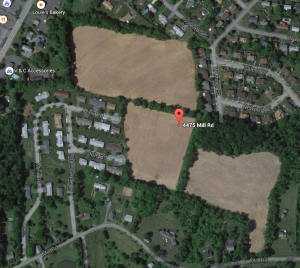If Lehigh Valley municipalities are serious about their long term financial resiliency we have to start doing a better job considering public costs of different development proposals. And do it beyond initial build out and 1st lifecycle of a project. This is called determining a cost of community service (COCS) ratio.
Upper Milford Township is starting to do just that with a 33 acre tract off Rt. 100. Supervisors are doing the math in an effort to determine if preserving the parcel is better off financially for taxpayers over the long term as opposed to assuming additional permanent liabilities associated with a proposed build out scenario.
Basically it’s a return on investment calculation.
Here is the thought process outlined by one Supervisor so far:
“If the Kohler farm is sold for housing construction according to (Rob) Sentner, the cost to educate new students would result in a $2,276,000 school district deficit per year with a total indebtedness amounting to $45,520,000 over a 20-year time-span to educate the new students. All East Penn School District taxpayers would be required to pick up the tab for all those new students.”
“Alternatively, if the township purchases the parcel with as $2 million bond at four per cent interest, this would cost Upper Milford residents much less at $145,428 annually.”
Many residents have strong feelings that preservation makes sense from a quality of life standpoint. And that is important to consider. But there is also a very powerful financial argument.
It’s well documented from COCS studies around the state (including one from nearby Berks Co. demonstrating a residential deficiency of 1:1:28) that new development costs more than it generates in new revenue. Primarily because school-related costs. Upper Milford officials are quantifying it. In East Penn the district calculation is amplified since we don’t have capacity for more students without major investments in new buildings.
The school end of the calculation is just the tip of the ice-berg. The math becomes even more telling when we consider long term liabilities assumed by the township. This includes items like maintenance of new traffic infrastructure and additional services.
If the twp. ends up purchasing the tract, once paid off it will become a township asset and part of their Park & Recreation master plan. There would be liabilities associated with that also. And additional intangibles tougher to measure such as increases in adjacent land values and associated tax base increases. This all must be measured.
Bottom line is, generally accepted COCS ratios are a great start. But to really figure out the true liabilities of development communities have to do the math on a case to case basis. That is what UM is doing with a careful examination of one proposed land development. And the outcome could justify spending dollars now to save dollars later. The reason UM is able to do this because the property was on their adopted official map. This is something Lower Macungie needs ASAP.

